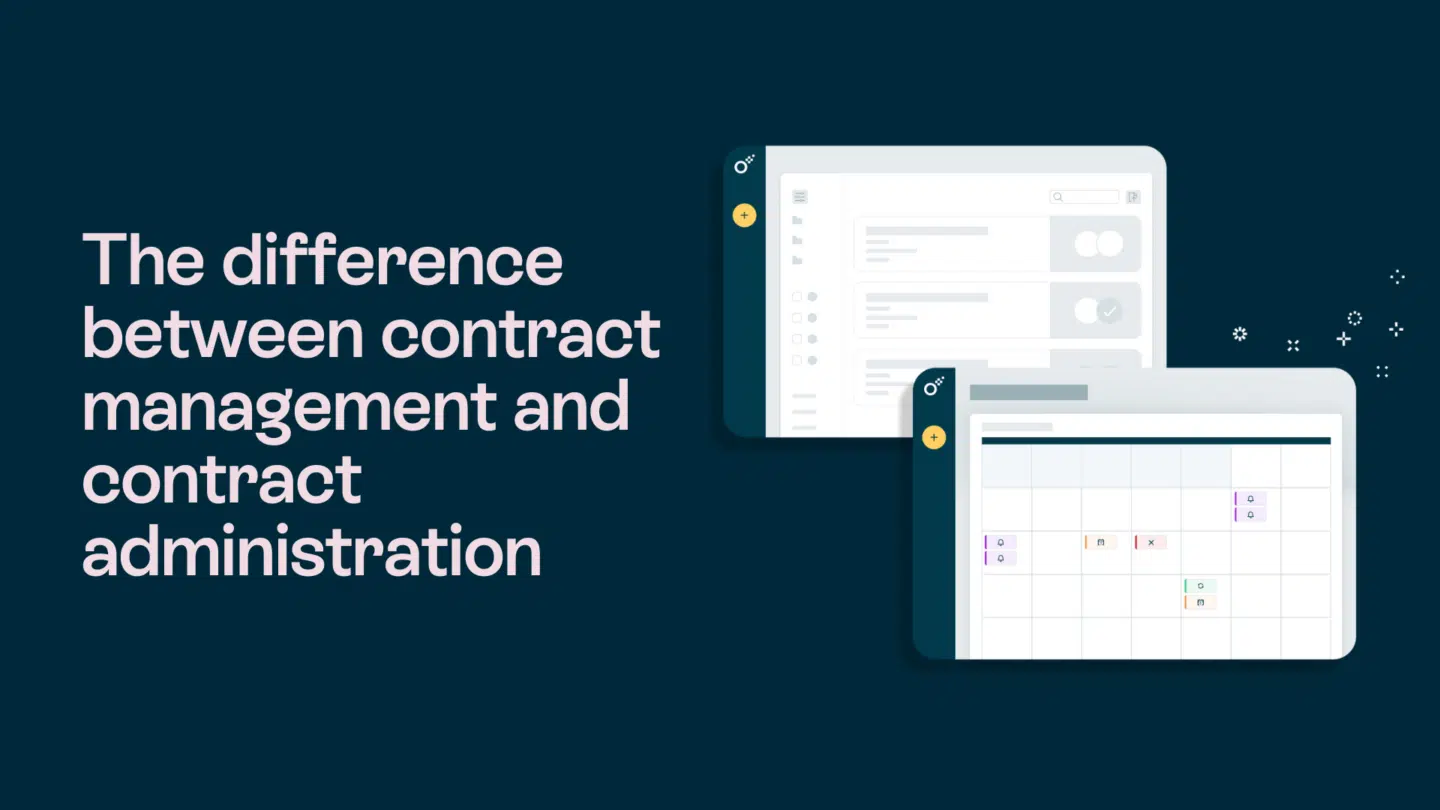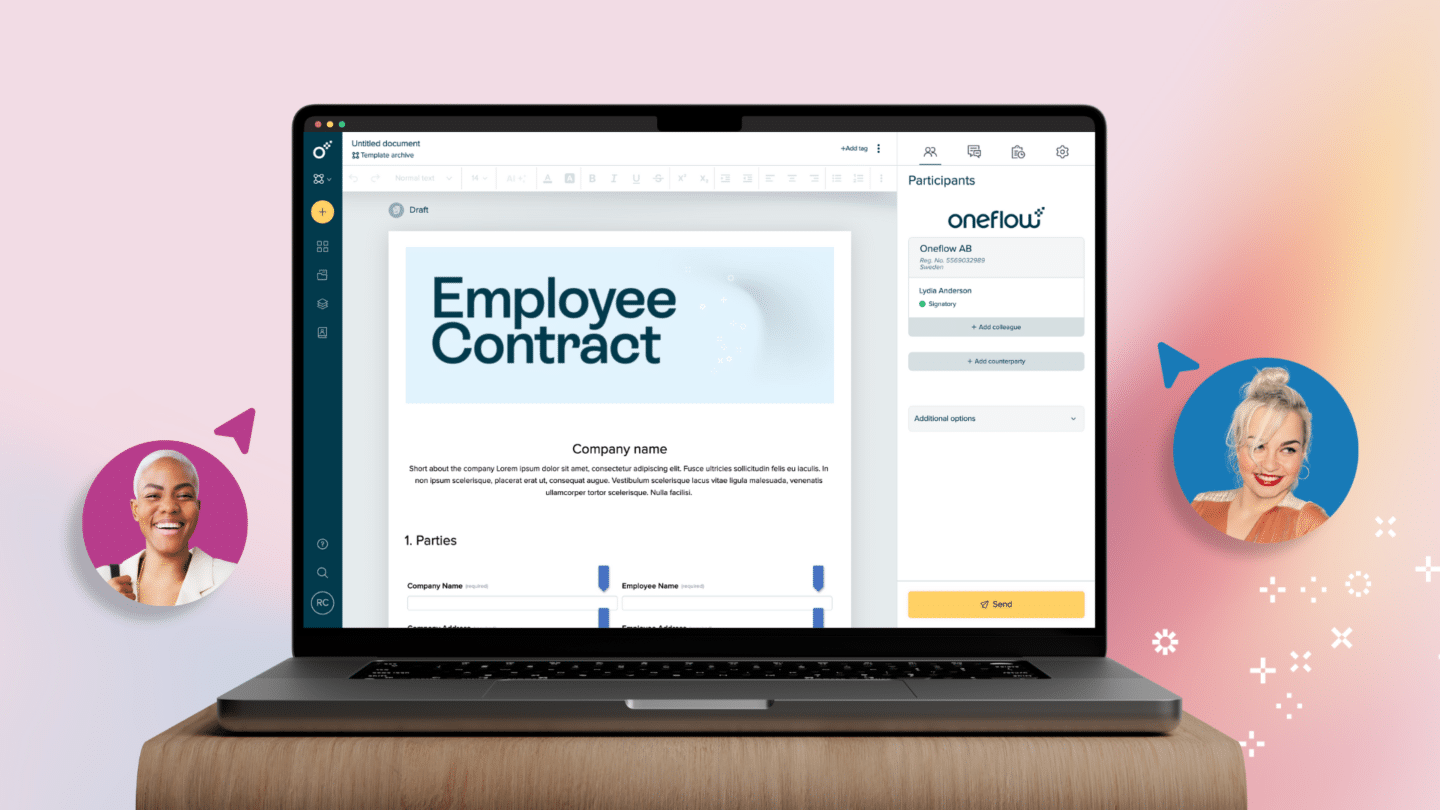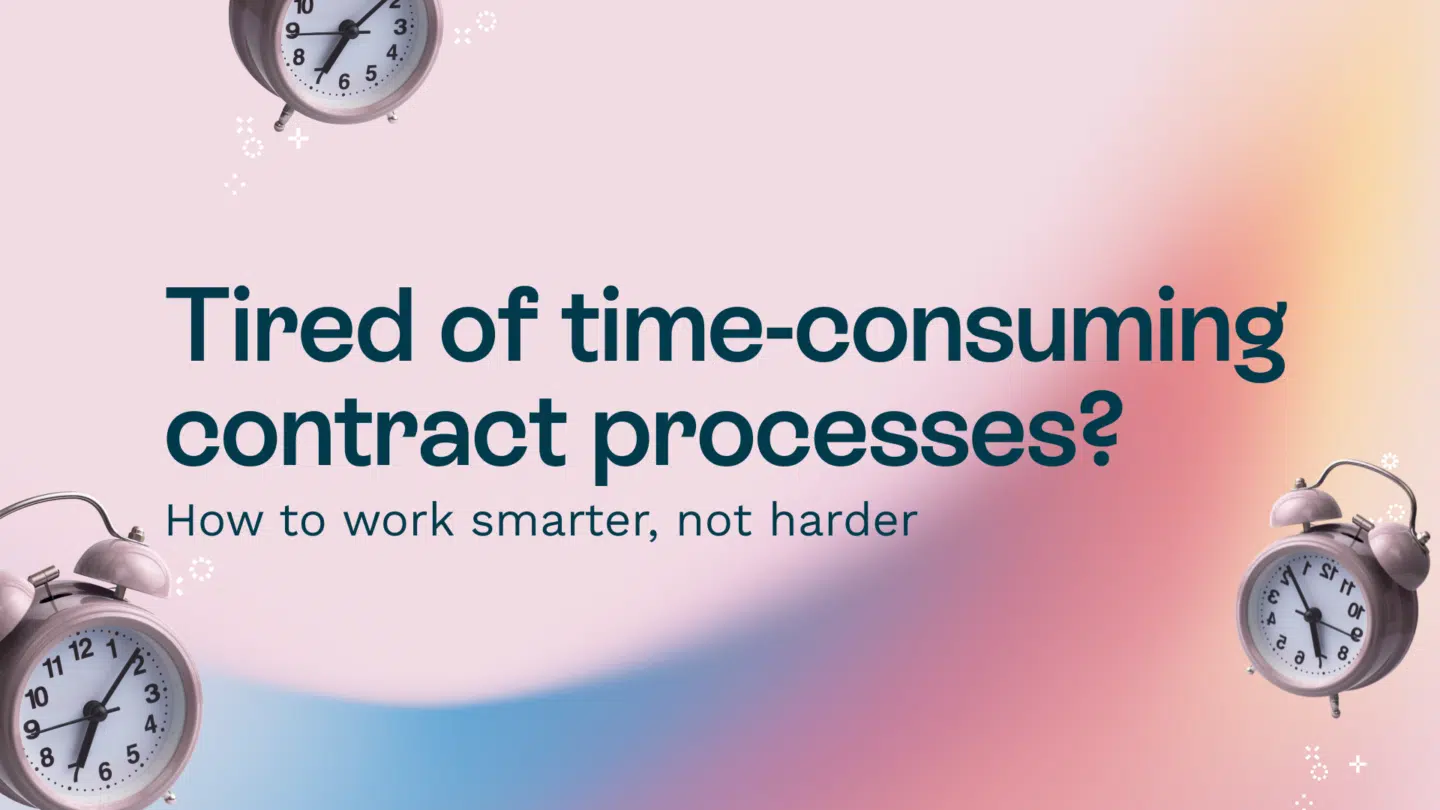In the world of contracts, two terms get thrown around a lot: contract management and contract administration. People often use them interchangeably, but here’s the thing: they’re not the same.
If you’re someone who deals with contracts on the regular — whether you’re closing sales, onboarding new hires, dealing with vendors, or navigating complex legal frameworks — knowing the difference can save you serious time, reduce risk, and keep things flowing smoothly.
So let’s clear the fog.

Are contracts boring you? Not when they go wrong
Before we dive into the distinctions, it’s worth asking: why does this even matter?
Because when things go wrong with a contract — missed deadlines, forgotten clauses, scope creep, compliance issues — it’s rarely due to the document itself. It’s usually because of what happens after it’s signed (or what never happens at all).
As highlighted in a Harvard Business Review article, poor contracting processes cost organizations millions and create friction that better lifecycle visibility could solve.
That’s where both contract administration and contract management come in. But they kick in at different times and serve different purposes.
Contract administration: Your pre-sign powerhouse
Contract administration, the pre-sign phase, covers everything from the moment you start creating a contract to the second it’s signed. Think of it as the backstage crew getting everything ready before the curtain rises.
It’s all about coordination, accuracy, and execution. Admins make sure the right people review the contract, the terms make sense, and nothing gets lost in translation. They’re often the unsung heroes making sure things don’t fall apart before they even begin.
Core tasks in contract administration:
- Drafting and negotiating terms
- Getting approvals and sign-offs
- Coordinating internal and external stakeholders
- Tracking versions and changes
- Ensuring compliance with internal policies
- Managing the signing process
If your process involves a lot of back-and-forth, multiple parties, or regulatory obligations (hi there, Legal and HR), this is where good administration makes or breaks the deal.

Contract management: The long game
Once a contract is signed, many assume the job is done. It isn’t. Contract management is what happens after the ink dries, the post-sign phase..
This is where you make sure what’s in the contract actually gets delivered. That timelines are met. That obligations are fulfilled. That renewals don’t sneak up on you in the middle of Q4.
What contract management involves:
- Storing and organizing signed contracts
- Monitoring performance and deadlines
- Managing renewals, expirations, and renegotiations
- Mitigating risk and ensuring compliance
- Auditing and reporting on contract outcomes
In essence, contract management is about holding everyone accountable, including your own team. Done right, it gives you visibility and control. Done poorly, and you’re at the mercy of missed deliverables, forgotten renewals, and frustrated stakeholders.

Who owns what?
This is where things can get fuzzy. In smaller companies, one person or team might wear both hats. In larger organizations, they’re usually separate roles.
Contract administrators tend to sit closer to operations, HR, legal, or procurement. They’re focused on getting contracts created and signed, quickly and correctly.
Contract managers, on the other hand, are more strategic. They might sit in Legal, Sales Ops, RevOps, or vendor management, overseeing ongoing obligations and analyzing contract performance over time.
Why knowing the difference matters
When roles aren’t clear, things slip. A contract gets signed, but no one tracks the SLA. A renewal deadline passes without renegotiation. A key compliance clause is missed because it wasn’t flagged during admin.
Understanding the difference between contract administration and contract management isn’t just semantics. It’s the foundation of a solid contract lifecycle.
Here’s what you gain when you get it right:
- Less friction. Each team knows what they’re responsible for.
- Faster turnaround. Admins streamline pre-signing workflows.
- Lower risk. Managers keep an eye on compliance and deadlines.
- Better visibility. You always know where contracts stand and what’s next.
Blurred lines in the digital age
With digital contracts and automation platforms the line between administration and management is blurrier than ever.
A platform that lets you track, sign, store, and monitor contracts in one place naturally brings these two functions closer together. That’s a good thing. It means less manual handover, fewer errors, and more continuity.
But it also means you need to be clear on who is responsible for what, even if the tool makes it easier. Technology supports the process, it doesn’t replace it.
So, which one should you focus on?
Both. You can’t manage what wasn’t properly administered. And you can’t get value from a contract if no one’s managing it.
But if you had to start somewhere: if your contracts are stuck in endless redlining loops, or signatures are taking weeks, it’s probably an admin issue. If you’re missing renewals or struggling with non-compliance, management needs attention.
Make sure you cover the whole contract lifecycle.

Tools that bridge the gap
Thankfully, you don’t need two separate systems to handle both ends of the spectrum.
Modern contract platforms, like Oneflow, unify the entire contract lifecycle; from creation to execution to ongoing management. According to Gartner, organizations using CLM platforms see improved compliance, faster cycle times, and better contract performance monitoring.
That means:
- Templates that speed up drafting and keep terms consistent
- Real-time collaboration and redlining
- E-signatures and automated approvals
- Smart reminders for renewals and deadlines
- Centralized storage with full-text search and filters
This not only smooths out the process, it also reduces the handoffs between admin and management. Everyone works from the same source of truth.
Final word: Contracts aren’t static documents
They’re living agreements that evolve, expire, and renew. If you treat them like static PDFs shoved in a folder, things will go wrong. But if you treat them like what they are — dynamic relationships with clear responsibilities — you unlock serious value.
Get your contract administration tight. Get your contract management strategic. And if possible, use a tool that supports both.
The smarter way to do contracts
At Oneflow, we make it easier to handle contracts from start to finish. Our platform helps you create, sign, and manage contracts all in one flow (pun intended). Whether you’re a sales rep closing deals, an HR pro onboarding talent, or a legal team keeping things compliant, Oneflow keeps everyone on the same page. Literally.
Ready to see how it works? Book a demo today.







